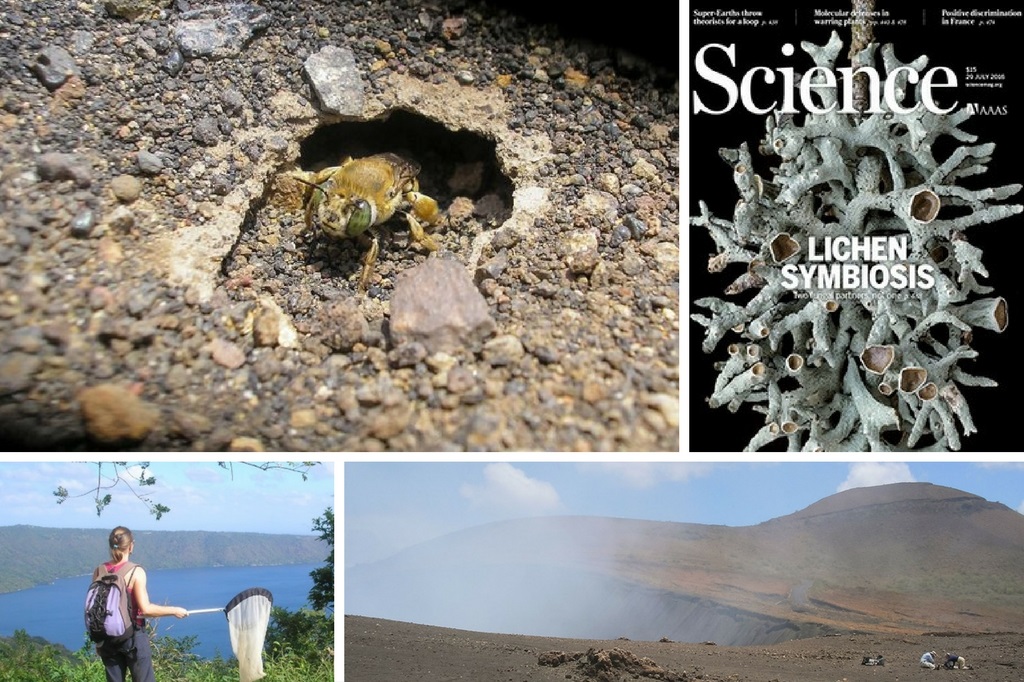The bee that lives on the edge… of an active volcano
Date 2.08.2016
2.08.2016
Dr Hilary Erenler, a former PhD student and current Visiting Researcher at the University of Northampton, has had her recent work investigating volcanic bees featured in Science magazine.
Dr Erenler was researching butterflies just outside the Nicaraguan capital city of Managua – home of the active Masaya volcano – when among the ash, noxious fumes and smoke she spotted something unexpected: a species of solitary bee. The species, Anthophora squammulosa was a new country record and is believed to be the first record of any bee living in ash in close proximity to an active volcano.
Upon making the discovery, Dr Erenler launched a study with other scientists and volunteers taking part in an Earthwatch Institute expedition to investigate why the bees might call this hot, barren, sulphurous environment ‘home’. The team visited the site five times over three years, donning gas masks to search for nests. They estimated a population of 1,000 to 2,000 bees and made casts of the nests to understand the nest architecture.
So what do bees living on the edge of an active volcano eat? Prior research has found that Anthophora bees are not usually fussy which plants they collect resources from, but on Masaya volcano food sources are limited. The scientists assessed the floral resources available to the bees, and cross-referenced this with the pollen carried by females on their bodies once they return to their nests. They found that 99 per cent of the pollen matched only one plant: Melanthera nivea, a tough wildflower that can survive the volcano’s acid rainfall.
The researchers think that the bees may survive in the volcano’s hellish landscape because the area hosts few predators and parasites that would threaten their survival. It could also be that—because no plants live in the immediate kill zone—their nests aren’t broken up by fast-growing roots.
Dr Hilary Erenler notes: “The bee population living on the volcano may be under even greater threat: not only could an errant eruption cause their demise, but because they appear to focus on only one plant at Masaya, if that plant dies out, the bees would need to switch their foraging strategy to survive.”
The bees are living life right on the edge. “I’m expecting that at some stage I’ll go back and there will be less bees,” Dr Erenler says. “It’s just a matter of what the tipping point is.”
—
Pictures courtesy of Dr Hilary Erenler.